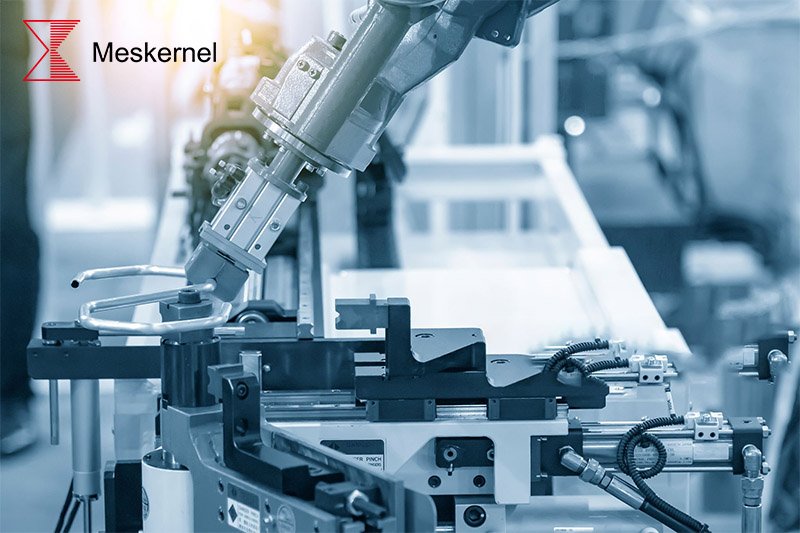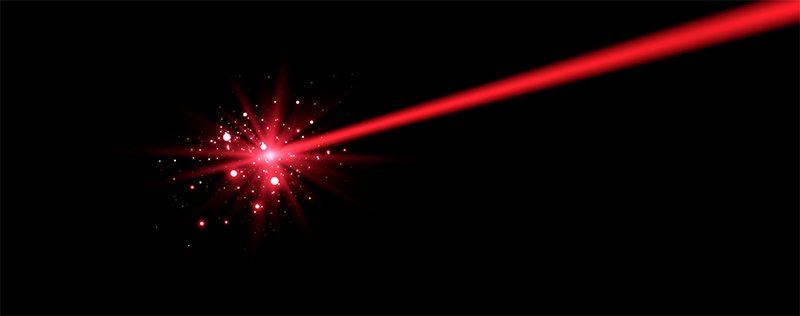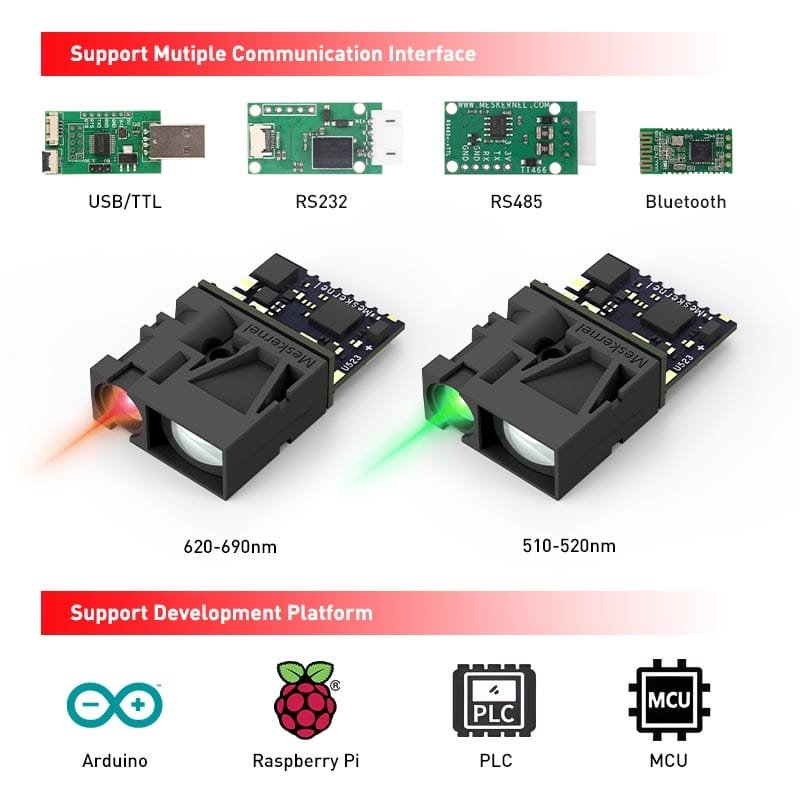Comment la mesure de distance par capteur laser améliore la précision et l'automatisation dans l'industrie
L'automatisation industrielle a besoin de mesures de haute précision
L'automatisation industrielle moderne dépend de systèmes de mesure fiables et très précis. Dans des processus tels que l'assemblage robotisé, le contrôle des convoyeurs et l'inspection automatisée, une erreur de quelques millimètres peut entraîner une inefficacité ou des défauts de produit coûteux. Pour répondre à ces exigences de précision, capteur laser mesure de la distance offre une solution optimale, rapide, précise et adaptable à de multiples environnements.
Contrairement aux systèmes mécaniques ou à ultrasons, les capteurs laser fonctionnent avec des méthodes optiques sans contact, ce qui les rend adaptés aux cibles délicates ou en mouvement. Ils fournissent des lectures cohérentes même lorsque la surface de la cible est métallique, réfléchissante ou éloignée.

Comment les capteurs laser mesurent-ils la distance ?
A capteur laser mesure la distance en émettant un faisceau étroit de lumière laser en direction de la cible. La lumière est réfléchie et le processeur interne du capteur calcule la distance en se basant sur le principe du temps de vol (ToF) ou du déphasage.
Pour des portées plus courtes et une grande précision, capteurs laser à déphasage sont couramment utilisés. Ils peuvent atteindre une précision inférieure au millimètre, ce qui les rend idéaux pour les systèmes d'automatisation, d'inspection et d'alignement. Pour les applications à longue distance - telles que la surveillance extérieure, les drones ou les systèmes de circulation - les systèmes de mesure de l'humidité peuvent être utilisés. capteurs laser à base d'impulsions mesurer des distances allant jusqu'à plusieurs kilomètres.
Cette combinaison de vitesse et de précision permet une surveillance continue des systèmes en temps réel, ce qui constitue la base d'une automatisation intelligente et efficace.

Avantages de la technologie de mesure de la distance par capteur laser
L'avantage le plus important de la Capteur laser mesurant la distance est leur précision. Avec des résolutions aussi fines que ±1 mm, ils surpassent les technologies ultrasoniques ou infrarouges dans les applications critiques en termes de précision. Parmi les autres avantages, citons
- Fonctionnement sans contact : Idéal pour les matériaux fragiles ou dangereux.
- Temps de réponse rapide : Fréquences de mesure jusqu'à 30 Hz ou plus.
- Conception compacte : Les modules miniatures s'intègrent facilement dans les petits systèmes d'automatisation.
- Capacité d'adaptation à l'environnement : Fonctionne de manière fiable dans la poussière, à la lumière du soleil ou sous l'effet des vibrations.
- Flexibilité d'intégration : Prend en charge des interfaces telles que RS485, UART, Modbus, ou des sorties analogiques telles que 4-20 mA.
Ces caractéristiques font que capteurs laser pour la mesure de la distance indispensables aux systèmes de contrôle industriel modernes.

Applications dans le domaine de l'automatisation industrielle
1. Robotique et positionnement
Les robots dépendent d'un retour d'information précis pour positionner les outils ou les pinces. L'utilisation d'un capteur laser pour mesurer la distanceGrâce à ces capteurs, les systèmes robotiques peuvent aligner, prélever et placer des composants avec précision et avec un minimum d'erreurs. Dans les robots collaboratifs (cobots), ces capteurs garantissent également une interaction sûre entre l'homme et la machine en surveillant les distances en temps réel.
2. Logistique et entreposage intelligents
Les entrepôts automatisés et les systèmes AGV (Automated Guided Vehicle) utilisent les technologies suivantes capteurs laser pour la mesure de la distance pour naviguer, éviter les collisions et gérer l'empilage. En analysant en permanence les données relatives à la distance et à la position, les systèmes logistiques permettent des opérations plus fluides, plus rapides et plus sûres.
3. Fabrication et inspection de la qualité
Dans les lignes de production, capteur laser mesure de la distance permet de contrôler l'épaisseur, de détecter les niveaux et de vérifier les composants. Le capteur peut inspecter les profils d'objets et détecter automatiquement les écarts, garantissant ainsi que chaque produit répond aux exigences de précision dimensionnelle.
4. Agriculture et construction
Qu'il s'agisse de surveiller la croissance des cultures ou de contrôler la profondeur des excavations, les capteurs laser fournissent des données précises sur la distance et la hauteur. Dans les environnements extérieurs, leur résistance à la poussière et à la lumière du soleil les rend plus fiables que les solutions à ultrasons.
5. Trafic et mobilité intelligente
Les systèmes de transport intelligents se déploient Capteur laser mesurant la distance pour la détection des véhicules, la surveillance de la vitesse et l'évitement des obstacles. Ces capteurs peuvent suivre des cibles en mouvement rapide à longue distance avec une précision constante, ce qui permet de soutenir les systèmes avancés d'aide à la conduite (ADAS) et le contrôle intelligent du trafic.

Exemple de cas : Modules de capteurs laser compacts de haute précision
Des entreprises comme Chengdu Meskernel Integrated Technology Co. Ltd. ont mis au point des capteurs laser à phase avancée, tels que le LDL-T Capteur de distance à laser et LDL-S Capteur de distance à laser. Ces capteurs présentent les caractéristiques suivantes
- Plage de mesure : 0,03-80 mètres
- Précision : ±1 mm
- Fréquence : jusqu'à 100 Hz
- Multiples interfaces de communication : USB, RS232, RS485, Modbus
- Versions laser rouge et vert
- Taille ultra-compacte
Ces conceptions hautes performances permettent une intégration transparente dans les plateformes Arduino, Raspberry Pi ou PLC, ce qui permet aux ingénieurs de prototyper et de déployer facilement des systèmes d'automatisation intelligents.
Pourquoi les industries choisissent-elles la mesure de distance par capteur laser ?
La demande mondiale d'automatisation et de transformation numérique a considérablement augmenté l'adoption de... capteur laser mesure de la distance Les fabricants recherchent un retour d'information de précision en temps réel pour un contrôle plus intelligent. Les fabricants recherchent un retour d'information de précision en temps réel pour un contrôle plus intelligent, une sécurité améliorée et une réduction des déchets. Qu'ils soient utilisés dans la surveillance basée sur l'IoT, la vision industrielle ou la robotique industrielle, ces capteurs améliorent la productivité et garantissent une qualité constante dans tous les secteurs.
En combinant un fonctionnement à grande vitesse, une fiabilité à long terme et une polyvalence d'intégration, capteurs laser pour la mesure de la distance deviennent un élément essentiel des écosystèmes de fabrication intelligente.
Conclusion
La transition vers les usines intelligentes et les systèmes autonomes repose sur des solutions de mesure précises, fiables et intelligentes. Avec capteur laser mesure de la distanceGrâce à cette technologie, les industries peuvent atteindre une plus grande précision d'automatisation, améliorer l'efficacité opérationnelle et atteindre de nouveaux niveaux de productivité.
Pour en savoir plus sur les détecteurs laser de distance de haute précision pour vos applications, visitez le site
https://www.lasersensor.net


